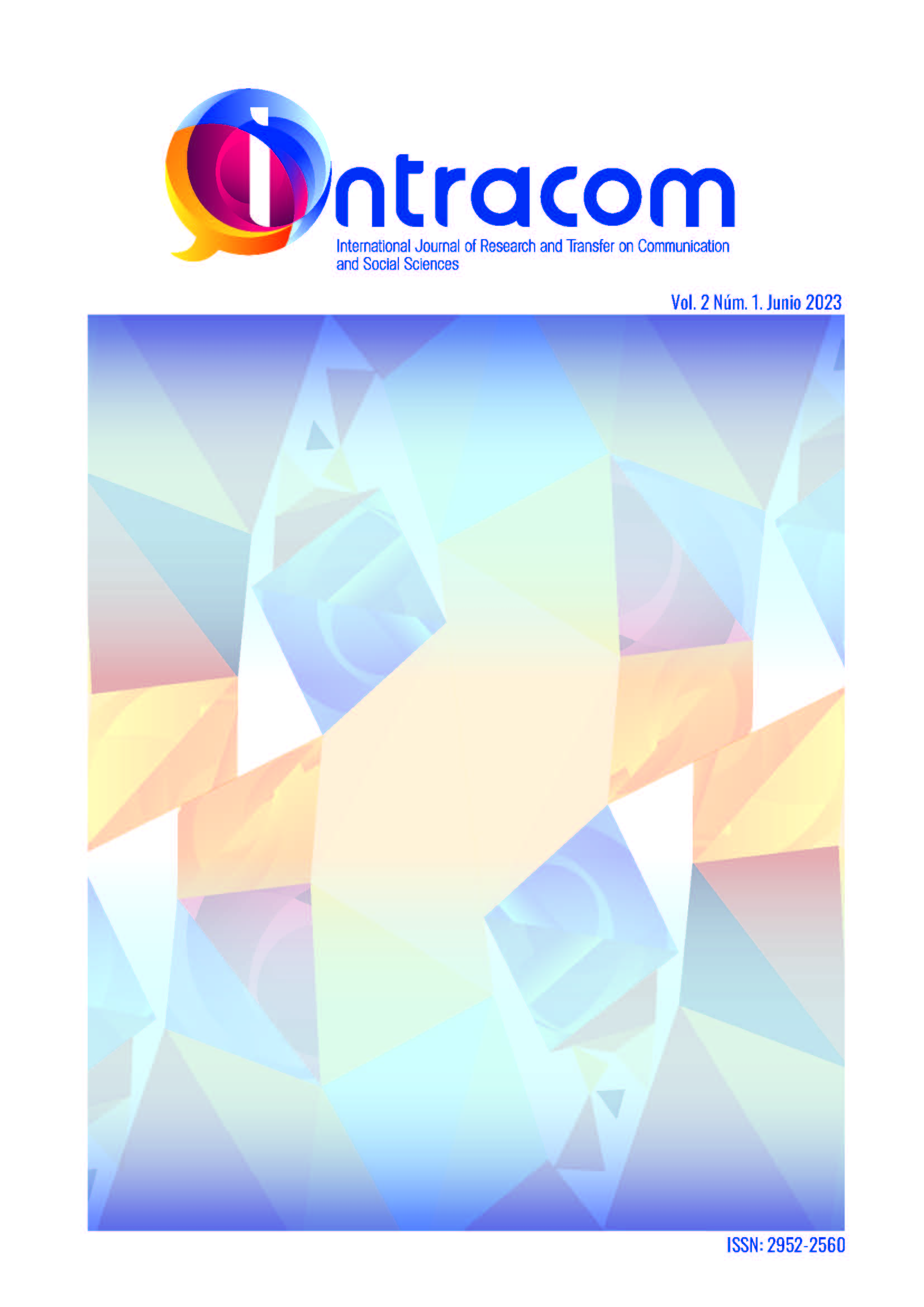Classical painting as a didactic resource to reflect on communication theories
DOI:
https://doi.org/10.61283/jm2ka378Keywords:
Communication Theories, art, students, didactic resources, mixed methodology, surveyAbstract
This paper shows the experience implemented at the University of the Basque Country (UPV/EHU), in which classical paintings have been used to explain Communication Theories. The practice, carried out in the Faculty of Social Sciences and Communication, aims to help establish meaningful relationships between subjects and concepts. Methodology: A mixed methodology has been used. Based on several examples of classical paintings, students have been explained how to reflect and draw conclusions from the theory taught in lectures. In addition, a survey was carried out among the participating students to find out their opinion on this pioneering exercise. Results: The students are more intrepid when it comes to establishing relationships between the paintings and the theory and conceive questions that would be difficult to pose without an exercise of this type. The survey confirms that students feel at ease with this practice, which motivates them and even increases their desire to interact in class. Conclusions: The results allow us to conclude that the use of paintings as a didactic resource is a valid strategy that should be taken into account by teachers of this type of subjects.
Downloads
References
Abramowski, A. (2009). El lenguaje de las imágenes y la escuela: ¿es posible enseñar y aprender a mirar? Revista Tramas. Educación, Audiovisuales y Ciudadanía. https://bit.ly/33nh4KT
Ardèvol-Abreu, A. (2015). Framing o teoría del encuadre en comunicación. Orígenes, desarrollo y panorama actual en España. Revista Latina de Comunicación Social, 70, 423-450.
Augustowsky, G. (2011). “Imagen y enseñanza, educar la mirada”. En G. Augustowsky, A. Massarini y S. Tabakman (Ed.), Enseñar a mirar imágenes en la escuela. (pp. 68-84), Tinta Fresca Ediciones. Buenos Aires, 2011.
Barragán-Caro, A.P.; Plazas-Cepeda, N.-I. & Ramírez-Vanegas, G.-A. (2015). La lectura de imágenes: una herramienta para el pensamiento crítico. Educación y Ciencia, (19), 85-103. https://bit.ly/3WXVpzO
Del Amor, C. (2020). Emocionarte. Espasa.
Devoto, E. (2013). La imagen como documento histórico-didáctico: algunas reflexiones a partir de la fotografía, Revista de Educación, 4(6), 73-96.
García-Morales, A (2012). ¿Qué puede aportar el arte a la educación? El arte como estrategia para una educación inclusiva. ASRI - Arte y Sociedad. Revista de Investigación, (1). https://bit.ly/34u7Z3d
Igartua, J. J. (2006). Métodos cuantitativos de investigación en comunicación. Bosch.
Juaristi, P. (2003). Gizarte ikerketarako teknikak. Euskal Herriko Unibertsitatearen Argitalpen Zerbitzua.
López, G. (2012). Pensamiento crítico en el aula. Docencia e Investigación, (22), 41-60. http://educacion.to.uclm.es/pdf/revistaDI/3_22_2012.pdf
McCombs, M. E., Shaw, D. L. & Weaver, D. H. (2014). New directions in agenda-setting theory and research. Mass communication and society, 17(6), 781-802. https://doi.org/10.1080/15205436.2014.964871
Melek, G. & Ulucay, D.-M. (2019). Atributos de los medios de comunicación y cambio de actitud: experimentos sobre el impacto del establecimiento de la agenda de segundo nivel sobre las actitudes hacia los refugiados sirios. Estudios sobre el mensaje periodístico, 25(1), 381-393. https://doi.org/10.5209/ESMP.63735
Navarro-Ruiz, M.I. & Hernández-Encuentra, E. (2004). Imagen, evocación y relato, Arbor, 697, 59-79.
Prendes-Espinosa, M.P. (1995) ¿Imagen didáctica o uso didáctico de la imagen? Revista Enseñanza, (13), 199-220.
Rasinger, Sebastián M. (2019). La investigación cuantitativa en Lingüística. Acal.
Rebanda-Coelho, Inês (2022). “The challenges of using moving images and still images in the classroom, in research and professionally”. En: Sandra Marinho & Pilar Sánchez-García (Coord.) Trial and error in journalism and communication education: between the classroom and industry (pp. 8-36). Cambridge Scholars Publishing.
Rengifo-Cifuentes, G. I. (2014). Formación del pensamiento histórico a partir del análisis de obras de arte pictóricas. Una propuesta didáctica de las ciencias sociales. Trabajo de Fin de Grado. Universidad de Antioquía.
Saint-Onge, M. (1997). Yo explicó, pero ellos... ¿aprenden? Enlace.
Santiesteban, A. (2010). La formación de competencias de pensamiento histórico. Clio & Asociados.
Yamila-Rigo, Diana (2014), Aprender y enseñar a través de imágenes. Desafío educativo. ASRI, Arte y Sociedad, (4). Universidad Nacional de Río Cuarto.
Zhiyuan Ma; Quan Liu & Jingjing Guan (2019). Diseño e Investigación del Sistema de Enseñanza Experimental para el Curso de Pintura Digital CG. EBDIT. Actas del 3er Taller Internacional sobre Educación, Big Data y Tecnología de la Información. (pp. 72-78).
Downloads
Published
Issue
Section
License
Copyright (c) 2023 Jose-Luis Argiñano, Udane Goikoetxea-Bilbao (Autor/a)

This work is licensed under a Creative Commons Attribution-NonCommercial-ShareAlike 4.0 International License.
Política de acceso abierto
Se permite el acceso libre y abierto de cualquier interesado a todos los contenidos de los números de la revista, sin costo alguno, pudiendo imprimir y trasladar todos los artículos, con la única condición de precisar la fuente y la autoría.
La revista: a) no cobra a las autorías costes por el procesamiento de los artículos ni por el envío de los mismos, b) mantiene el copyright para los autores sin restricciones, c) facilita a los autores conservar sus derechos de publicación sin limitaciones.
La Revista Internacional de Investigación y Transferencia en Comunicación y Ciencias Sociales (INTRACOM) es una obra original gestionada por Activa 19 Comunicaciones. Todos los artículos incluidos en la Revista son obra original de sus respectivas autorías. Esta Revista se ofrece libremente a la comunidad científica y académica sin coste alguno y libera los contenidos de acuerdo a la licencia "Reconocimiento-NoComercial-CompartirIgual 4.0 CC BY-NC-SA" del proyecto Creative Commons dispuesta en la siguiente url: https://creativecommons.org/licenses/by-nc-sa/4.0/legalcode






